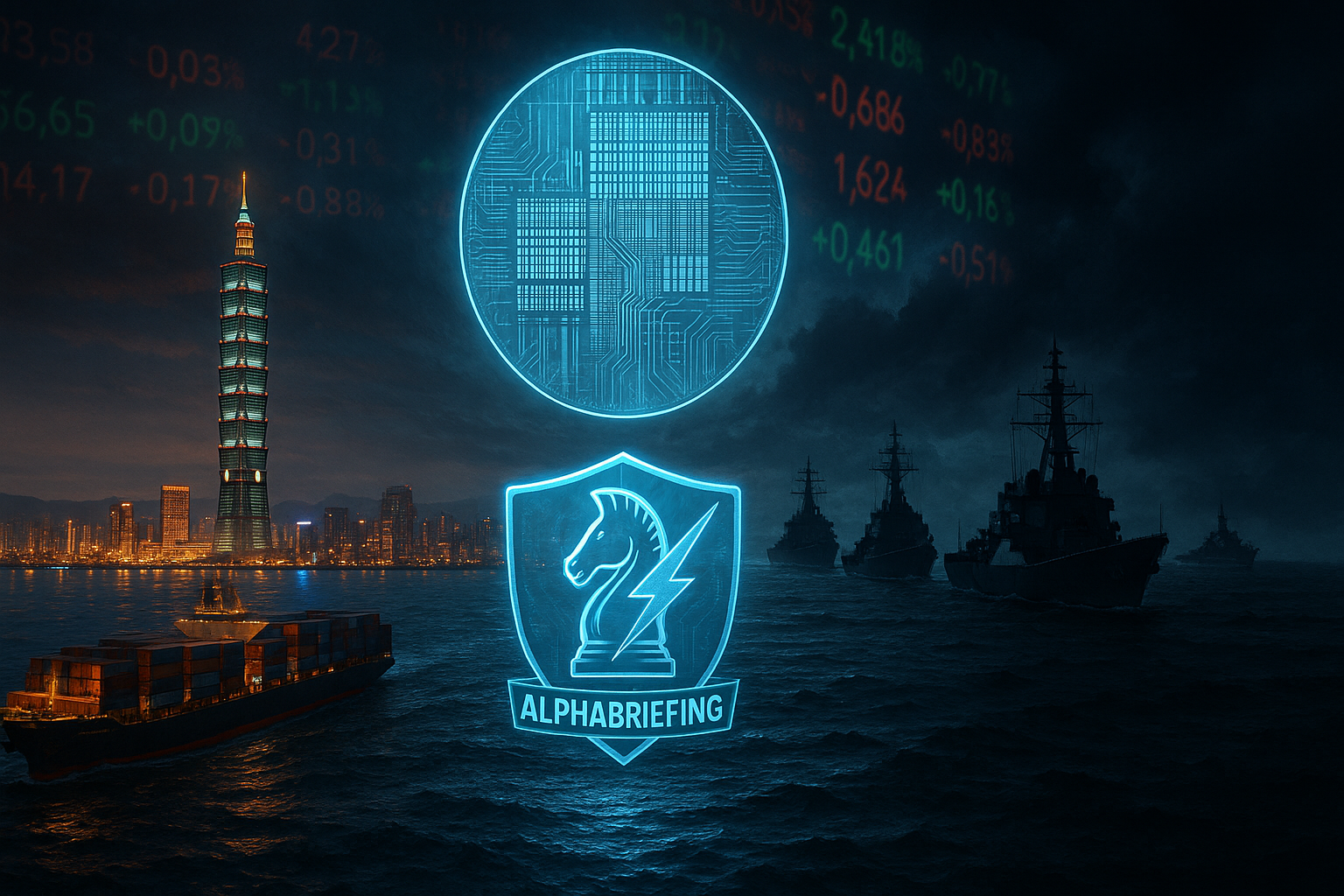⚡Taiwan and the Chip Wars: The Fragile Supply Line at the Center of Global Markets
Taiwan makes nearly 90% of the world’s most advanced chips. If conflict disrupts that lifeline, markets from autos to defense would feel it. A blockade would shock; an invasion would rewire the global economy.

For decades, oil shocks set the tempo of global recessions. Today the more immediate risk fits on a silicon wafer. Nearly nine out of ten of the world’s most advanced chips are fabricated in Taiwan, overwhelmingly by TSMC. Those chips don’t just power iPhones; they run data centers, AI accelerators, avionics, precision-guided munitions, and secure communications. One small island has become the world’s most consequential industrial chokepoint.
Why concentration matters
Geography compounds the risk. The Taiwan Strait is among the busiest shipping corridors on earth, linking Northeast Asia’s manufacturing hubs to the world. A serious crisis—whether gray-zone harassment, a “quarantine,” or a full blockade—would ripple through electronics, autos, logistics, and finance in days, not months.
What Washington is doing (and why it takes time)
The U.S. is racing to rebuild “leading-edge” capacity at home. Policy targets call for roughly one-fifth of global leading-edge logic output to be U.S.-based by 2030. Arizona has already seen initial 4-nanometer production, with additional U.S. fabs and advanced-packaging sites planned. But megaprojects slip: marquee schedules have slid into 2030–31. Fabs are among the most complex factories humans build; duplicating the ecosystem—tools, chemicals, software, and people—takes years.
China’s counter-levers
Beijing has demonstrated it can weaponize upstream inputs. Restrictions on gallium, germanium, and graphite—materials essential to chips and batteries—signaled a willingness to squeeze supply chains without firing a shot. Those curbs periodically tightened supply and raised prices, reminding markets that semiconductors are a policy instrument as much as a product.
The near-term reality
Large-scale PLA “exercise cycles” around Taiwan are now a recurring feature of the calendar. Markets wobble when risk flares, yet the true shock comes if drills slide into a de facto blockade—or worse. Until redundant capacity is genuinely online in the U.S., Europe, Japan, and Korea, Taiwan remains a single point of failure for advanced logic.
Handy definitions
Fab — a semiconductor fabrication plant.
Leading-edge — the most advanced manufacturing nodes (≈2–5nm today) used in high-performance chips.
Advanced packaging — the back-end assembly that connects many chiplets into one high-performance device; crucial for AI accelerators.
👉 Subscribers: the premium section maps blockade vs. invasion scenarios to markets and details which sectors—well beyond chips and AI—take the hit, and which ones get funded first.
